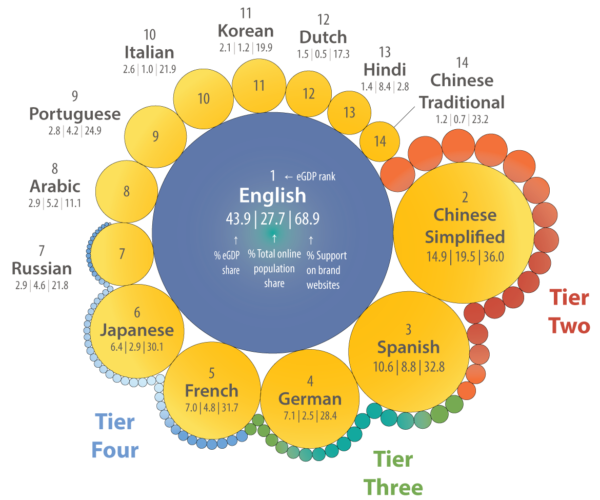Language pairs
Here are some of the languages we work with. Can’t see the language your are looking for? No problem, just send us a message and we’ll add it to the list.
| Afrikaans || af | Dinka || din | Hungarian || hu-hu | Luxembourgish || lb | Portuguese (Portugal) || pt-pt | Tamil (India) || ta |
| Albanian || sq-al | Divehi || dv | Icelandic || is-is | Maay Maay || ymm | Punjabi (India) || pa | Tatar || tt-ru |
| Amharic || am | Dutch || nl-nl | Igbo || ig | Macedonian || mk-mk | Quechua (Peru) || qu | Tedim Chin || ctd |
| Arabic || ar | Dzongkha || dz | Ilocano ||ilo | Malagasy || mg | Rohingya || rhg | Telugu (India) || te |
| Armenian || hy-am | English || en-gb | Indonesian || id-id | Malay || ms-MY | Romanian || ro-ro | Tetum || tet |
| Assamese (India) || as | English || en-us | Inuktitut ||iu | Malayalam (India) || ml | Russian || ru-ru | Thai || th-th |
| Azeri (Azerbaijan) || az-az | Estonian || et-ee | Irish || ga | Maltese || mt-mt | Samoan || sm | Tibetan || bo |
| Balinese || ban | Falam || cfm | Italian || it-it | Maori || mi | Sanskrit (India) || sa | Tigre || tig |
| Basque || eu | Farsi (Persian) || fa-ir | Japanese || ja-jp | Marathi (India) || mr | Scottish Gaelic || gd | Tigrinya || ti |
| Belarusian || be-by | Fijian || fj | Javanese || jv | Marshallese || mh | Serbian || sr-sp | Tongan || to |
| Bengali (India) || bn | Filipino || fil | Kannada (India) || kn | Mien || ium | Shona || sn | Tswana || tn |
| Bosnian || bs-ba | Finnish || fi-fl | Karen || kar | Moldovan || mo | Sindhi || sd | Turkish || tr-tr |
| Bulgarian || bg-bg | French (Canada) || fr-ca | Karenni | Mongolian || mn-mn | Sinhalese || si | Turkmen || tk |
| Burmese || my | French (France) || fr-fr | Kashmiri (India) || ks | Montenegrin || cnr | Slovak || sk-sk | Twi || tw |
| Catalan || ca-es | Galician || gl | Kazakh || kk-kz | Ndebele || nd | Slovenian || sl-sl | Ukrainian || uk-ua |
| Cebuano || ceb | Georgian || ka-ge | Khmer || km | Nepali || ne | Somali || so | Urdu (India) || ur |
| Cherokee || chr | German || de-de | Kinyarwanda || rw | Norwegian || nb-no | Northern Sotho || ns-ZA | Uyghur || ug |
| Chinese (Hong Kong) || zh-hk | Greek || el-gr | Kirundi || rn | Norwegian || nn-no | Spanish (Mexico) || es-mx | Uzbek || uz-uz |
| Chinese (Traditional) || zh-tw | Gujarati (India) || gu | Konkani (India) || kok | Nyanja || ny | Spanish (Spain) || es-es | Vietnamese || vi-vn |
| Chinese (Simplified) || zh-cn | Haitian Creole || ht | Korean || ko-kr | Oriya (India) || or | Spanish (LatAm) || es-419 | Welsh || cy |
| Chuukese || chk | Hakha Chin || cnh | Kurdish || ku | Oromo || om | Spanish (US) || es-us | Wolof || wo |
| Creole || ht | Hausa || ha | Kyrgyz|| ky-kg | Palauan || pau | Sundanese || su | Xhosa || xh |
| Croatian || hr-hr | Hazaragi || haz | Lao || lo | Pashto || ps | Swahili || sw | Yoruba (Nigeria) || yo |
| Czech || cs-cz | Hebrew || he-il | Latvian || lv-lv | Pohnpeian || pon | Swedish || sv-se | Zulu || zu |
| Danish || da-dk | Hindi (India) || hi | Lingala || ln | Polish || pl-pl | Tagalog || tl | |
| Dari (Afghanistan) | Hmong ||hmn | Lithuanian || lt-lt | Portuguese (Brazil) || pt-br | Tajik || tg |
World stats
Take a look at the most recent statistics of the world population. Here’s the takeaway. Not everyone speaks English. Although English is the most widely spoken language in the world, almost half of the world’s population is monolingual. Out of the world’s approximately 7.5 billion inhabitants, 1.5 billion speak English — that’s 20% of the Earth’s population. However, most of those people aren’t native English speakers. About 360 million people speak English as their first language. In addition to being widely spoken, English is by far the most commonly studied foreign language in the world, followed by French at a distant second.
80% of the planet’s population cannot speak English!
EU stats
Just over half of all Europeans claim to speak at least one other language in addition to their mother tongue. The majority of Europeans (54%) are able to hold a conversation in at least one additional language, 19% of Europeans are bilingual, a quarter (25%) are able to speak at least two additional languages and one in ten (10%) are conversant in at least three. Just under half of all Europeans (46%) are not able to speak any foreign language well enough to hold a conversation. According to a 2006 survey, 13% of European Union citizens speak English natively. Out of about 450 million people in the EU, that’s only 58 million native English speakers. Another 38% of EU citizens said they know enough English to have a conversation, so the total reach of English in the EU is 51%.
Half of all Europeans (49%) do not speak English!
Language priorities
To make your customers feel at home in foreign markets you need to communicate in their native language. A safe bet to start with is to choose the top half of the Tier One languages listed in the latest report by the Common Sense Advisory (CSA). We recommend to start with the top half and then add other languages as your business grows. Tier One languages, ranked by economic opportunity, together address almost 90% of global online GDP. Prioritization among languages is critical to maximize the overall return on translation investment. Annual benchmarks on online audience size and online economic opportunity will help you to reevaluate the translation budget for maximum ROI.
Languages by share % of online GDP
Languages by share % of online audience
The visualization below provides data and insight of the potential market available from the top languages rather than countries or territories. It accounts for multilingualism, taking into account second languages, and a broad range of locales to deliver a comprehensive view of the role of language in global commerce. It will assist you with planning your brand strategy to expand global reach.
CSA Research’s annual benchmark of the Top 100 languages, ranked by eGDP

Source: Common Sense Advisory (CSA Research) “Multilingual Digital Opportunity: 2019”




